Things were not going much better the next morning in Khorramabad. We awoke early to the crashing sound of a nearby explosion. All the hotel electricity was out so we stayed in bed in the dark for a while, joking that it may have been an Israeli or US air attack - but really hoping our electricity would come back on so we could have a shower, and wash and dry our hair. Fortunately, Khorramabad was not being attacked; a car had knocked over a telegraph pole. But the electricity didn't come back on and so, feeling bleak and rather dishevelled, we made our way to breakfast. The kind hotel staff boiled some eggs and made coffee. We ate in darkness and in a short time we were back on our tour. Early.
Khorramabad is the capital city of the western province of Lorestan. The population of some 350,000 mainly comprises the Lori people who have their own language and culture. Located in the soaring barren Zagros mountains, the city is the base for the agricultural industries that dominate the local economy. Khorramabad is known also for its military activities, although we did not know about this at the time. The Imam Ali Base is some 35 kilometers from the city centre and is alleged to be home to a number of air missiles deployed in underground bunkers. Had we known, then perhaps we would not have been so casual about the morning's explosion!
Falakolafalak Citadel was built in the Sassanid Era of AD 226-651 by the powerful Atabegs who ruled Lorestan up to 1600 when they were subjugated by the forces of Shah Abbas. The citadel later became the residence of Persian governors who developed it into the classical fortress now known as Falak-ol-afalak or Heaven of Heavens. A military academy and prison in the days of the Pahlavi rule, it is now a museum and tourist destination.
Khorramabad was not being at all kind. It was gloomy and raining, and Mohammad had a lot of trouble in finding the entrance to Falakolafalak, mainly due to the complex one-way streets. The citadel, although spectacular, looked dreary and forbidding and the museum was frankly quite boring. I'm sure on a brighter day and under better circumstances our visit would have been quite different. And an overly long and tedious tour by the museum guide didn't help our spirits.
After a difficult time finding our way out of the citadel grounds, we were finally on our way to the city of Ahvaz via the historic sites of Susa and Shusta. The scenery was again depressing as was the drive. Driving through the township of Andimeshk, roughly 100 kilometers from Khorramabad was sobering - not that we needed to get sober. The air reeked of sulphurous chemicals from the nearby oil extraction sites and beggars littered the streets. Mohammad's car finally broke down and as it was a Friday and of course a holiday, none of the mechanics' shops was open. Fortunately, the ever resourceful Mohammad eventually found a mechanic who could help and we set off again for Susa.
Susa was once one of the great cities of ancient Persia. Located in the desert surrounds of the lower Zagros Mountains the relatively small new town of Shush (built on the ancient site of Susa) boasts a vast archaeological site that is dominated by the magnificent 19th century Shush Castle. The castle was actually constructed by the French archaeologist Jean-Marie Jacques de Morgan in the late 1890's as a secure base for archaeological exploration and excavation. The castle was heavily damaged in the Iran-Iraq war of 1980-88 but has since been fully restored by the Iranian government.
The Shush Museum (or Museum of Susa) was interesting, displaying pottery vessels, and metal and stone objects that date back to some 6,000 years ago. Sadly a lot of the findings from the site have been removed and shipped to France where they are held at The Louvre in Paris. Others are on display at the Archaeological Museum of Tehran. The pottery, some pieces dating back to 4,500 BC and the glazed reliefs were gorgeous, as were the two partially preserved horse heads adorning the paved museum terrace.
Somehow Mohammad convinced us to visit the Tomb of Daniel. Susa is mentioned in the Bible's Old Testament in the Book of Esther. Although there is much conjecture about who is buried where, it is thought that Esther is buried in Hamadan while Daniel is said to be buried in Susa. Whatever the case, the cone faceted site of the tomb was only built in 1871, and whilst attractive in design, it further convinced us of the irrelevance of visiting every tomb and mausoleum.
Our next stop in Susa was much more interesting. At the Choqa Zanbil site in a solitary desert dune environment looms a multi-levelled, pyramidal temple known as a "ziggurat". First constructed in the 13th century BC, the temple is known as one of the finest examples in the world of Elamite architecture and is now one of Iran's UNESCO Heritage sites. In the long shadows of a late afternoon we roamed the site, fascinated by its vastness and torrid history. We found it incredible that for some 2,500 years after its sacking by the Ashurbanipal around 640 BC, the city was totally "lost" and was only accidentally rediscovered by the Anglo-Iranian Oil company during an aerial survey in 1935.
We thought we were the only tourists on the lonely site when we were approached by a youngish, rather handsome Iranian man. "Ahh, where are you from?" he asked, just like every other Iranian person we had met so far. "Australia" we answered. "Good. If your were Israeli I cut your throat!" he said with a charming smile. We had no doubt he probably would have. Thankfully, the young man turned out to be very friendly. "Actually, I love all people. Except the Israelis and the Mullahs!" he roared far too loudly. We believed him implicitly. It was not the first time we had heard outbursts from local people about the mullahs and/or the government, nor was it the last. At least this setting was relatively secluded, although from what we heard, people can never be too careful. Secret police authorities can be anyone, anywhere and at any time.
We were about to climb into Mohammad's car when another loud shout echoed. "Wait, I want you to meet this Muddar (a mother)". Our outspoken friend was running toward us, his white shirt billowing. It seemed he had also befriended two other people. An older woman dressed in a traditional black gown and headscarf, and her husband slowly followed him. As it happened, their son and his family had moved recently to Darwin, Australia and they were extremely concerned for their safety and welfare. We assured them that Darwin was in fact quite safe and a good place for employment. Tearfully, the woman hugged and thanked us while her husband kindly invited us to their home in Andimeshk*.
On our way to Shusta, Alan and I agreed that this chance encounter was what made all our overseas trips special. While we enjoy the history and scenic attributes of far away places, we know that it is meeting local people and exploring their culture and way of life that gives us the greatest pleasure. And we had done nothing of this to date. Our tour, although interesting, had so far felt a bit like a school excursion. And by this time we certainly were needing some space.
Our last destination for the day was the town of Shusta (or Shustar) some 90 kilometers from Ahvaz city in south-western Iran. For centuries Shusta was famous for controlling the irrigation of the arid plains of southern Khuzestan. Today, it is more of a tourist destination but it was interesting to look at the 700 year old water mills, or rather chutes, that pinpoint where the original water mills once laid. It certainly was an attractive site, prettily landscaped and rather a joy to see some water after many hundreds of kilometers through arid and monotonous desert landscape. An elderly local man was very friendly and offered to explain the old workings of the site to us. I'm not sure how we got onto the subject but immediately we asked what we considered to be rather a benign question about funding, he became extremely evasive, saying he didn't want to comment. After all he said, he had been in jail for some seven years and could not comment on anything to do with government issues.
This was yet, another warning to us that the facade of normality even in regional areas, only just masks an underlying deep seated fear of the government regime by the Iranian people.
A big red dust storm approached as we sped toward the southern city of Ahvaz. Visibility was reduced to about 50 meters and the air was hot and suffocating. According to the Iranians, apparently all dust in Iran originates from poor Iraq. We were not sure this was entirely true but it was certainly blowing a dust infected gale from the west. We approached Ahvaz with some trepidation. Even the usually upbeat Lonely Planet guide gives it the thumbs down:
"Ahvaz today is a sprawling, featureless industrial city serving the Masjed-e Soleiman oilfields... Unremitting Iraqi bombing during the Iran-Iraq War didn't beautify it and subsequent redevelopment has failed to offer much inspiration. April to October temperatures regularly soar to 50 degrees C, making an air-conditioned hotel room the greatest attraction".
With our disappointment with our hotels up until then, you can see why we were feeling apprehensive! But for a change, we were pleasantly surprised to find our very pleasant hotel overlooking the Karun River. And we had AIR-CONDITIONING!
* Some six months after we arrived home in Australia we received a telephone call from Iran. A young English speaking friend of the couple we had met at Susa had agreed to contact us on their behalf. She told us that the couple was still concerned about the safety and well being of their son and asked whether we may be able to assist him with employment. We said we would do whatever we could to assist and asked if their son could send us an email detailing his situation and educational qualifications. We have not heard from him to date.
"If You Were Israeli - I Cut Your Throat!"
Friday, April 22, 2011
 Ahvaz, Khūzestān, Iran
Ahvaz, Khūzestān, Iran
Other Entries
-
1Introduction
Apr 1012 days prior Crowdy Head, Australiaphoto_camera0videocam 0comment 0
Crowdy Head, Australiaphoto_camera0videocam 0comment 0 -
2HISTORICAL TIMELINE
Apr 1111 days prior Crowdy Head, Australiaphoto_camera1videocam 0comment 0
Crowdy Head, Australiaphoto_camera1videocam 0comment 0 -
3Bon Voyage - or the Last Supper?
Apr 1111 days prior Crowdy Head, Australiaphoto_camera1videocam 0comment 0
Crowdy Head, Australiaphoto_camera1videocam 0comment 0 -
4Pssst - Most People in Western China are Muslim...
Apr 1111 days prior Sydney, Australiaphoto_camera3videocam 0comment 0
Sydney, Australiaphoto_camera3videocam 0comment 0 -
5Just a Fleeting Stay in Shanghai
Apr 1210 days prior Shanghai, Chinaphoto_camera2videocam 0comment 0
Shanghai, Chinaphoto_camera2videocam 0comment 0 -
6Back
Apr 139 days prior Urumqi, Chinaphoto_camera4videocam 0comment 0
Urumqi, Chinaphoto_camera4videocam 0comment 0 -
7Everything is Grand and White in Ashgabat
Apr 148 days prior Ashgabat, Turkmenistanphoto_camera18videocam 0comment 0
Ashgabat, Turkmenistanphoto_camera18videocam 0comment 0 -
8Ancient Gonur - Good Morning Mr Sarianidi!
Apr 175 days prior Mary, Turkmenistanphoto_camera12videocam 0comment 0
Mary, Turkmenistanphoto_camera12videocam 0comment 0 -
9Stumbling Over the Border and Into Iran
Apr 184 days prior Mashad, Iranphoto_camera2videocam 0comment 0
Mashad, Iranphoto_camera2videocam 0comment 0 -
10Mashad - Our Confronting Introduction to Iran
Apr 184 days prior Mashad, Iranphoto_camera9videocam 0comment 0
Mashad, Iranphoto_camera9videocam 0comment 0 -
11Around Mashad - Mausoleums of Two Literary Giants
Apr 193 days prior Tehran, Iranphoto_camera7videocam 0comment 0
Tehran, Iranphoto_camera7videocam 0comment 0 -
12Tehran to Hamadan - So Dizi My Head is Spinning...
Apr 202 days prior Hamadan, Iranphoto_camera8videocam 0comment 0
Hamadan, Iranphoto_camera8videocam 0comment 0 -
13To Khorramabad: Connecting With the Archaemenids
Apr 211 day prior Khorramabad, Iranphoto_camera11videocam 0comment 0
Khorramabad, Iranphoto_camera11videocam 0comment 0 -
14"If You Were Israeli - I Cut Your Throat!"
Apr 22 Ahvaz, Iranphoto_camera7videocam 0comment 0
Ahvaz, Iranphoto_camera7videocam 0comment 0 -
15Iran-Iraq War Martyrs: Flying the Fallen
Apr 231 day later Shiraz, Iranphoto_camera8videocam 0comment 0
Shiraz, Iranphoto_camera8videocam 0comment 0 -
16Perceptions of Persepolis: Grandeur of the Ruins
Apr 242 days later Shiraz, Iranphoto_camera8videocam 0comment 0
Shiraz, Iranphoto_camera8videocam 0comment 0 -
17Photo Gallery of Persepolis and Naqsh-E Rostam
Apr 242 days later Shiraz, Iranphoto_camera16videocam 0comment 0
Shiraz, Iranphoto_camera16videocam 0comment 0 -
18Today: The First Day of the Remainder of Your Life
Apr 253 days later Kerman, Iranphoto_camera16videocam 0comment 0
Kerman, Iranphoto_camera16videocam 0comment 0 -
19Yazd - Such a Lovely Place, Such a Lovely Place...
Apr 275 days later Yazd, Iranphoto_camera14videocam 0comment 0
Yazd, Iranphoto_camera14videocam 0comment 0 -
20Toward Esfahan - "The Jewel of Ancient Persia"
Apr 286 days later Esfahan, Iranphoto_camera34videocam 0comment 0
Esfahan, Iranphoto_camera34videocam 0comment 0 -
21A Gorgeous Carpet, Jolfa and Fascinating Abyaneh
Apr 308 days later Abyaneh, Iranphoto_camera9videocam 0comment 0
Abyaneh, Iranphoto_camera9videocam 0comment 0 -
22Photo Gallery of Abyaneh Village
Apr 308 days later Abyaneh, Iranphoto_camera13videocam 0comment 0
Abyaneh, Iranphoto_camera13videocam 0comment 0 -
23Destination Tehran - Reflections on our Travels
May 019 days later Tehran, Iranphoto_camera13videocam 0comment 0
Tehran, Iranphoto_camera13videocam 0comment 0 -
24Osama bin Laden Dead - Our Travel Plans in Chaos
May 0210 days later Dubai, United Arab Emirates, United Arab Emiratesphoto_camera11videocam 0comment 0
Dubai, United Arab Emirates, United Arab Emiratesphoto_camera11videocam 0comment 0 -
25For Better or For Worse - We Head off to Islamabad
May 0311 days later Islamabad, Pakistanphoto_camera4videocam 0comment 0
Islamabad, Pakistanphoto_camera4videocam 0comment 0 -
26Eclectic Chitral - North West Frontier Province
May 0412 days later Chitral, Pakistanphoto_camera14videocam 0comment 0
Chitral, Pakistanphoto_camera14videocam 0comment 0 -
27The Wonderful Faces of Chitral Town
May 0412 days later Chitral, Pakistanphoto_camera8videocam 0comment 0
Chitral, Pakistanphoto_camera8videocam 0comment 0 -
28A Four-Seater Jeep, Six People & Two Kalashnikovs
May 0513 days later Bomburet, Pakistanphoto_camera15videocam 0comment 1
Bomburet, Pakistanphoto_camera15videocam 0comment 1 -
29Love Affair with Rumbur, A Sick Jeep Trip to Buni
May 0614 days later Buni, Pakistanphoto_camera9videocam 0comment 0
Buni, Pakistanphoto_camera9videocam 0comment 0 -
30Insight into the Life of the Lost Kalasha People
May 0614 days later Buni, Pakistanphoto_camera8videocam 0comment 3
Buni, Pakistanphoto_camera8videocam 0comment 3 -
31More Photos of the Kalasha Peoples
May 0614 days later Buni, Pakistanphoto_camera14videocam 0comment 0
Buni, Pakistanphoto_camera14videocam 0comment 0 -
32Tandoori Chicken, Potatoes & Eggs at Shandur Pass
May 0715 days later Gupis, Pakistanphoto_camera23videocam 0comment 0
Gupis, Pakistanphoto_camera23videocam 0comment 0

 Ahvaz, Khūzestān, Iran
Ahvaz, Khūzestān, Iran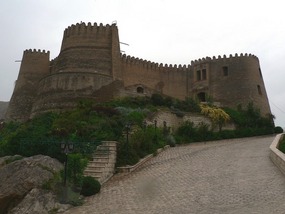
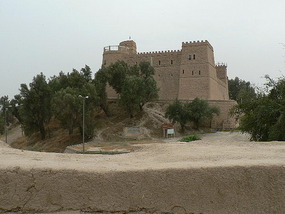
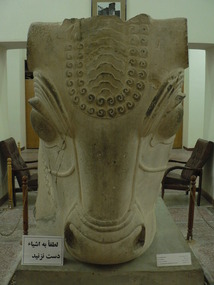
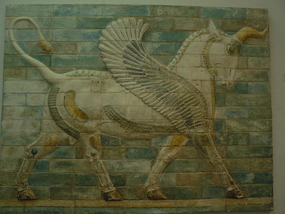
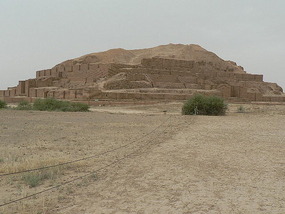
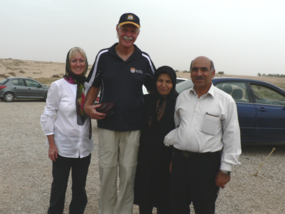
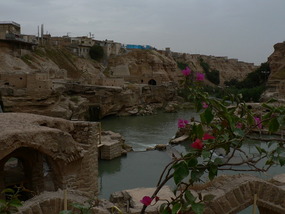






2025-05-22